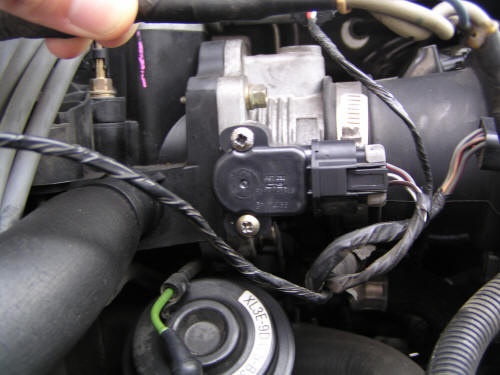Fleas caused the Black Plague. A few misplaced carbon atoms sank the Titanic. Tribbles crippled the Enterprise. Sometimes, the smallest and most seemingly innocuous things can cause the biggest problems, and that certainly is true of one little sensor on top of your engine. These days, engines have become so utterly dependent on this simple sensor that many use it exclusively in place of the reliable old throttle cable. It doesn’t take much going wrong in the throttle position sensor to cause a whole plague of issues — possibly including a bit of unintended acceleration to warp speed.
TPS Sensor Function
At heart, a TPS sensor is effectively a dimmer switch. It’s a “potentiometer,” a kind of variable resistor that can increase or decrease the amount of voltage that makes it from one end of the sensor to the other. Inside the sensor is a crescent-shaped strip of material with a certain amount of resistance. A metal arm sweeps over the crescent like the wiper over your windshield. The “wiper arm” carries about 5 volts of power going in, and the fat end of the crescent-shaped resistor has a wire going out. When the arm is over the skinny end of the crescent, not much voltage goes through from the arm to the output wire. As the arm sweeps over to the fat end, more current makes it to the output wire. The wiper arm is connected to the throttle shaft on the engine; so, as the throttle blade opens and closes, the output voltage goes up and down.
Driveability
TPS sensors will typically experience the most wear on the skinny end of the crescent resistor, since this is where the wiper arm spends the most time, and where current meets the most resistance. Jerking hesitation under acceleration and a rapidly fluctuating idle are the classic symptoms of a bad TPS sensor. Most often, TPS failure will manifest as more of an unsteady electrical connection than an outright failure; this unsteady connection tells the computer that you’re rapidly opening and closing the throttle, even though you’re not. The oxygen sensors will tell the computer that the air-fuel ratio is wrong, but they and the computer can’t adjust fuel delivery fast enough to keep up. The result is a rapidly and randomly fluctuating idle, and a random stutter during acceleration.
Codes and Scanning
Most of the time, the computer will recognize that something’s gone awry with the TPS sensor and trigger a code telling you so. There are more than a dozen self-diagnostic trouble codes for a bad TPS sensor, running from P0120 to P0229; any of these will tell you that there’s a problem there. Most scanners have a feature to monitor engine vitals and throttle position in real-time with the engine running, but this feature isn’t generally much help in diagnosing a TPS. Generally speaking, the sensor circuit will fluctuate so rapidly that the scanner won’t display the voltage changes. A scanner that updates its readings every 0.1 second isn’t going to see voltage fluctuations that happen every 0.09 second.
Digital Multimeter Diagnosis
There are typically three wires coming out of a TPS sensor: a constant reference voltage, a ground and a sensor output usually in found between them. Connect the ground lead on your digital multimeter to the battery ground, and turn the key to the “On” position. Probe the three wires. You’ll get a steady voltage — usually about 5 volts — for one, no reading for the ground, and a much smaller voltage reading for the output wire. Once you’ve identified the wires, you can begin comparing voltage readings.
Typical Fault Readings
The output reading at idle should be about 5 percent or less of the reference voltage, and more than 90 percent when you turn the throttle to wide open. So, if you’ve got a 5 volt reference, you should have as much as 0.25 volt at idle and more than 4.5 volts at full throttle. Sweep the throttle back and forth very slowly; the voltage should be very steady at any position. If you see the meter jumping or the numbers rapidly fluctuating with the throttle held still, the TPS is definitely bad. The same may be true if output voltage is more than 5 percent at idle, or less than 90 percent at wide open; but, fluctuating voltage with the throttle held just off idle, where the sensor sees the most wear, is the most common fault indicator.
Note — A Life or Death Matter
Many modern vehicles use a “drive-by-wire” systems, and most DBW cars use a pair of redundant TPS sensors. They need a redundant system, because the TPS — often integrated with the servo that controls throttle position — ultimately determines whether or not a DBW vehicle thinks it should be at idle or wide-open throttle. That can be a problem, if you’re sitting at an intersection and the computer decides you should be going 150 mph for half a second. Again, many DBW vehicles have redundant systems to keep this from happening, but it still does from time to time. If you have a DBW vehicle and suspect a bad TPS, consider replacement of said sensor your top priority.

Symptoms of a Bad Throttle Position Sensor
by
Tags:

Leave a Reply